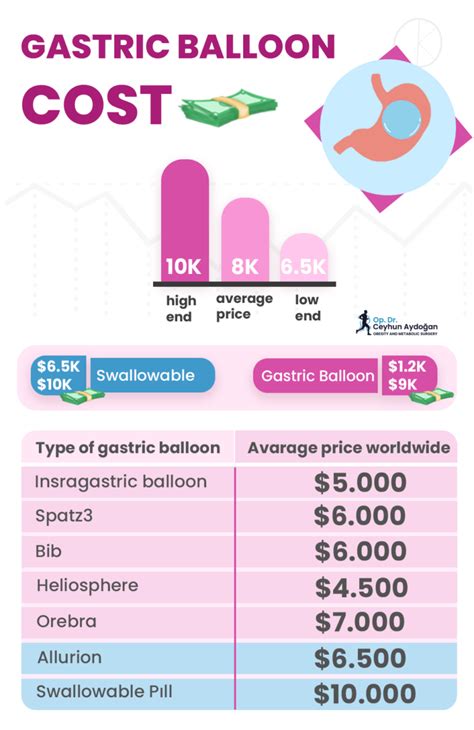Understanding gastric balloon procedure
The gastric balloon procedure has become increasingly popular among individuals looking to lose weight. This minimally invasive procedure involves placing a silicone balloon into the stomach, which takes up space and helps individuals to feel full more quickly. In combination with a healthy diet and regular exercise, the gastric balloon can assist individuals in achieving their weight loss goals.
The procedure itself typically takes about 30 minutes to complete. Under the guidance of a gastroenterologist, a deflated balloon is inserted through the mouth and into the stomach. The balloon is then filled with saline solution, expanding to about the size of a grapefruit. This process usually causes minimal to no discomfort, and patients can usually return home the same day as the procedure.
After the procedure, patients are advised to follow a strict diet and exercise plan. The balloon can remain in the stomach for up to six months, during which time patients can expect to lose between 20-50 pounds. Once the six months are up, the balloon is deflated and removed. Patients are then encouraged to continue with their healthy lifestyle habits in order to maintain their weight loss.
While the gastric balloon procedure is not a permanent solution to weight loss, it can provide individuals with the jumpstart they need to begin seeing real results. Additionally, unlike other weight loss surgeries, the gastric balloon is less invasive, is not permanent, and does not require significant alterations to the digestive system.
However, it is important to note that the gastric balloon procedure is not without potential risks. Some patients may experience nausea or vomiting immediately following the procedure, and in rare cases, the balloon can deflate or rupture in the stomach. As with any medical procedure, it is important for individuals considering the gastric balloon to weigh the potential benefits against the potential risks.
So, how much does the gastric balloon cost with insurance? While pricing can vary depending on a number of factors, including location and specific insurance coverage, the average cost for the procedure is typically between $8,000-$9,000. However, many insurance providers do offer coverage for the gastric balloon procedure as a weight loss option.
Before pursuing the gastric balloon procedure, it is important to check with your insurance provider to determine what, if any, coverage may be available to you. Some providers may require documentation from a medical professional indicating that the procedure is medically necessary for weight loss.
In conclusion, the gastric balloon procedure can be an effective tool in weight loss for appropriate candidates. While it does come with potential risks, it is typically considered a safer and less invasive weight loss option than other surgical procedures. While the cost of the procedure can be significant, insurance coverage may be available to help offset the price for those who qualify.
Does Insurance Cover Gastric Balloon Cost?
For individuals considering gastric balloon for weight loss, the cost of the procedure is an important factor to consider. Gastric balloon is a non-invasive and temporary weight loss procedure that involves inserting a silicone balloon in the stomach to limit food intake. The cost of the gastric balloon procedure varies depending on location and surgeon, but on average, the cost ranges from $8,000 to $15,000.
While gastric balloon is an effective weight-loss treatment, many individuals with insurance wonder whether their insurance plan covers the procedure. The answer is not straightforward. Some insurance plans may cover a portion or all of the gastric balloon cost, while others may not cover the cost at all.
The gastric balloon is approved by the Food and Drug Administration (FDA) and is considered a medically necessary procedure in some cases. However, insurance coverage for gastric balloon is dependent on several factors, including the individual's insurance plan and the reason for the procedure. Most insurance providers require a medical necessity letter from a physician that explains why gastric balloon is necessary for the individual.
Individuals with a body mass index (BMI) of 30 or higher and a history of unsuccessful attempts at weight loss through diet and exercise may be eligible for gastric balloon as a medically necessary weight loss intervention. However, if the individual does not meet the criteria, insurance plans may classify gastric balloon as a cosmetic procedure and may not cover the cost.
It is essential to contact your insurance provider to understand if your plan covers gastric balloon. If your insurance covers gastric balloon, it is crucial to understand the out-of-pocket cost, including deductibles, copays, and coinsurance. Many insurance providers have a pre-authorization process that requires approval before undergoing the procedure.
If your insurance plan does not cover gastric balloon, there are other financing options available. Many gastric balloon providers offer financing plans and other payment options to help make the procedure more affordable.
In conclusion, insurance coverage for gastric balloon is dependent on several factors, including the individual's insurance plan and the reason for the procedure. While some insurance plans may cover the cost, others may classify the procedure as cosmetic and not cover it. It is essential to contact your insurance provider to understand your coverage, including deductibles, copays, and coinsurance. With many financing options available, gastric balloon may be a feasible weight loss intervention for individuals who do not have insurance coverage.
Factors that affect gastric balloon cost with insurance

Gastric balloon is a non-surgical weight loss procedure that involves the insertion of an inflatable balloon into the stomach to help patients lose weight. The cost of the procedure can vary depending on factors such as insurance coverage, location, and the type of balloon used. Here are some factors that can affect gastric balloon cost with insurance:
Insurance coverage

The cost of gastric balloon with insurance can vary depending on a patient's insurance policy. Some insurance companies may cover the procedure partially or fully, while others may not cover it at all. Patients should check with their insurance company to determine what their policy covers and what out-of-pocket costs they can expect to pay for the procedure.
Location of the procedure

The cost of gastric balloon can also vary by location. Patients living in areas with a high cost of living or high demand for the procedure may pay more for the procedure than those in areas with lower costs. Patients can research different locations and compare costs to find the most affordable option.
Type of balloon used

There are different types of gastric balloons available, and the type of balloon used can affect the cost of the procedure. Some balloons may be more expensive than others due to factors such as material, design, and size. Patients should discuss their options with their healthcare provider to choose a balloon that best fits their needs and budget.
Consultation fees and follow-up visits

Besides the cost of the procedure, patients may need to pay consultation fees and follow-up visits. Healthcare providers typically require patients to undergo a medical examination before the procedure to determine if they are a good candidate for the gastric balloon. Patients may also need follow-up visits to monitor their progress and ensure the balloon is functioning correctly. Patients should budget for these additional costs when planning for the procedure.
Overall cost savings

Although gastric balloon can be costly, it may offer long-term cost savings for patients who struggle with obesity-related health conditions such as high blood pressure, diabetes, and sleep apnea. Losing weight can reduce the need for medications and medical procedures related to these conditions, and the associated costs. Patients should consult their healthcare provider to determine if the financial and health benefits of gastric balloon outweigh the costs.
In conclusion, the cost of gastric balloon with insurance can vary depending on several factors, including insurance coverage, location of the procedure, the type of balloon used, and additional fees such as consultation and follow-up visits. Patients should research different options and discuss their needs and budget with their healthcare provider to determine the most affordable and effective weight loss solution.
How to choose an insurance plan that covers gastric balloon
If you are considering getting a gastric balloon, it is important to understand the costs involved. The procedure can be expensive, but some insurance plans do cover it. Here are some tips for choosing an insurance plan that covers gastric balloon:
1. Check if your current plan includes coverage for gastric balloon
The first thing you should do is check if your current insurance plan covers gastric balloon. Your plan may cover the procedure partially or fully. Check your insurance policy documents or contact your provider's customer service to find out.
2. Look for plans that specialize in weight loss surgery coverage
Some insurance plans specialize in covering weight loss procedures, including gastric balloon. These plans usually offer more comprehensive coverage, which may include preoperative and postoperative care, as well as nutritional counseling and support groups.
3. Find out what the plan's requirements are
Before choosing an insurance plan, it is important to find out what the requirements are for coverage. Some plans may require that you have a certain body mass index (BMI) or that you have tried and failed to lose weight on your own. Make sure you understand all the requirements before choosing a plan.
4. Consider the cost of premiums and deductibles
When choosing an insurance plan, it is important to consider the cost of premiums and deductibles. The cost of the plan may vary depending on your age, health, and location. Some plans may have higher premiums but lower deductibles, while others may have lower premiums but higher deductibles. Make sure you understand the costs associated with the plan before choosing it.
In conclusion, choosing an insurance plan that covers gastric balloon can be tricky, but it's not impossible. By checking your current plan coverage, looking for specialized weight loss surgery coverage, finding out the plan requirements, and considering the costs of premiums and deductibles, you can find the right plan for you.
Tips for minimizing out of pocket gastric balloon cost with insurance
Gastric balloon surgery has become a popular and minimally invasive weight loss solution in recent years. While insurance may cover the procedure, there are still a range of factors that may affect your out-of-pocket costs, such as copayments, deductibles, and coinsurance. Here are five tips for minimizing your gastric balloon cost with insurance:
1. Check your insurance coverage
Before your surgery, it's vital to review your health insurance policy to find out what your plan covers. Not all insurance companies cover gastric balloon surgery, so it's best to confirm before scheduling your procedure. If your plan does cover this type of surgery, make sure you understand the specific requirements and criteria for coverage to avoid costly surprises later.
2. Choose an in-network provider
Choosing an in-network provider will help you save on the cost of your gastric balloon surgery. In-network providers typically have negotiated prices with your insurance provider, which means that you'll pay less for their services compared to what you'd pay out of pocket. Plus, choosing a provider that is in-network can prevent surprise charges that may occur when you see an out-of-network doctor.
3. Meet your deductible first
If your health insurance plan has a deductible, you'll need to spend a certain amount of money on medical care before your insurance starts to cover the cost. If you have other medical expenses planned for the year, consider scheduling your gastric balloon surgery after you've met your deductible to minimize your out-of-pocket costs.
4. Ask about self-pay discounts
Some medical providers may offer self-pay discounts for patients who don't have insurance or choose to pay for their treatment out of pocket. If you have health insurance, it's still worth asking if you can get a discount for paying the cost in full before your surgery. You may be surprised how much money you can save by doing so.
5. Negotiate payment plans
If you can't pay the cost of your gastric balloon surgery all at once, ask your medical provider if they offer payment plans. Many providers are willing to work with patients to come up with a payment schedule that works for both parties. Make sure to review the terms of the payment plan and any interest rates carefully before you agree to it.
By following these tips, you can reduce your out-of-pocket costs for gastric balloon surgery with insurance. Whether you're looking to lose weight or improve your health, gastric balloon surgery can be an effective solution that fits within your budget.